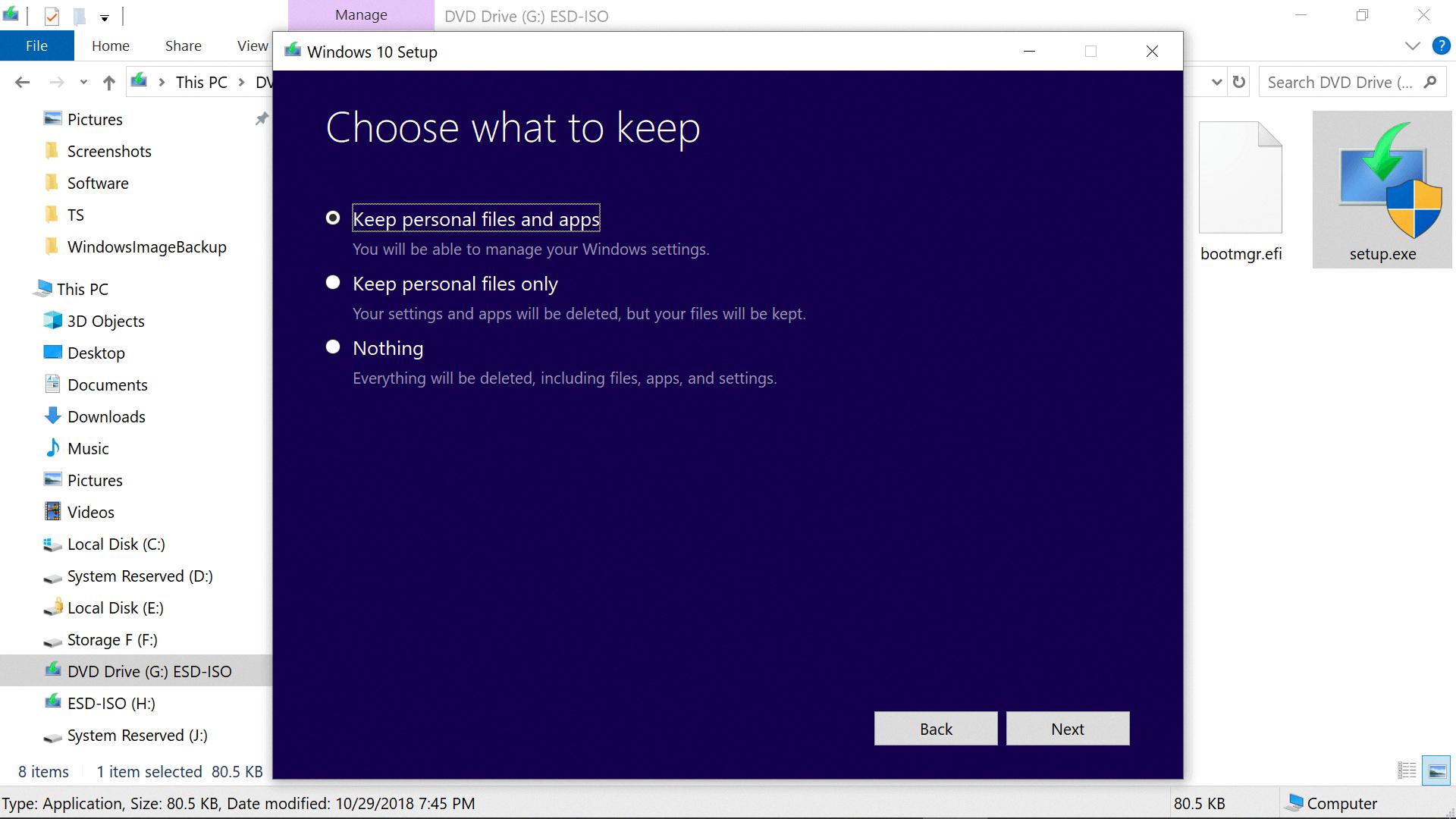Windows 10 is one of the most popular operating systems used by millions of people worldwide. However, sometimes you may need to reinstall Windows 10, either to fix an issue or to clean up your system. But the thought of losing all your files and data can be daunting. In this article, we will guide you on how to reinstall Windows 10 without losing your files.
Method 1: Reset Windows 10 PC from Settings
The first method is to reset your PC from the settings menu. Here are the steps to follow:
Step 1: Click on the “Start” button and go to “Settings.”
Step 2: Click on “Update & Security,” followed by “Recovery.”
Step 3: Under “Reset this PC,” click on the “Get started” button.
Step 4: You will be asked whether you want to keep your files or remove everything. Choose “Keep my files” if you want to reinstall Windows 10 without losing your files.
Step 5: Click on the “Reset” button and wait for the process to complete.
Method 2: Repair Install Windows 10
The second method is to use a repair install to reinstall Windows 10 while keeping your personal files, apps, and settings. Here are the steps to follow:
Step 1: Go to the Microsoft website and download the Media Creation Tool.
Step 2: Run the tool and select “Upgrade this PC now” option.
Step 3: Follow the on-screen instructions and choose the “Keep personal files, apps, and Windows settings” option.
Step 4: Click on the “Install” button and wait for the process to complete.
Method 3: Fresh Install Windows 10
If you want to do a fresh install of Windows 10 and remove everything, you can use the Reset This PC option. Here are the steps to follow:
Step 1: Click on the “Start” button and go to “Settings.”
Step 2: Click on “Update & Security,” followed by “Recovery.”
Step 3: Under “Reset this PC,” click on the “Get started” button.
Step 4: Choose “Remove everything” if you want to do a fresh install of Windows 10.
Step 5: Click on the “Reset” button and wait for the process to complete.
Conclusion
Reinstalling Windows 10 can be a daunting task, especially if you have important files and data on your PC. However, with the above methods, you can reinstall Windows 10 without losing your files. Whether you choose to reset your PC from the settings menu, use a repair install, or do a fresh install, always make sure to back up your important files and data before starting the process.
Reinstalling Windows 10 Without Losing Files and Programs
To reinstall Windows 10 without losing files and programs, you need to follow these steps:
1. Create a backup of all your important files and folders.
2. Download the Windows 10 installation media from the Microsoft website.
3. Insert the installation media into your computer and restart it.
4. Press the required key to boot from the installation media.
5. Select your language preferences and click on “Install now.”
6. Enter your product key or skip this step if you don’t have one.
7. Accept the license terms and click on “Next.”
8. Select the “Custom: Install Windows only (advanced)” option.
9. Choose the partition where you want to install Windows 10 and click on “Next.”
10. Click on “Change what to keep.”
11. Choose between “Keep personal files, apps, and Windows settings,” “Keep personal files only,” and “Nothing,” according to your storage needs.
12. Click “Next” to install Windows 10.
Once the installation process is complete, your files and programs should still be intact. However, it is always recommended to create a backup before reinstalling Windows 10 to avoid any data loss.

Reinstalling Windows 10 Without Losing Data
You can reinstall Windows 10 without losing data using either the Repair Install or Reset This PC options. Repair Install allows you to choose to install Windows 10 while keeping all personal files, apps, and settings, keeping personal files only, or keeping nothing. On the other hand, Reset This PC allows you to do a fresh install of Windows 10 to reset the system and keep personal files, or remove everything. It is important to note that before performing either of these options, it is recommended to back up important data to ensure that it is not lost during the reinstallation process.
Repairing Windows 10 Without Losing Files
If you want to repair Windows 10 without losing your files, there are some steps you can follow. The first thing to do is to make sure you have a backup of your important files, just in case something goes wrong during the repair process.
Method 1: Reset Windows 10 PC from Settings
One way to repair Windows 10 without losing files is to use the built-in reset feature. To do this, click on the Start menu, then select Settings. From there, click on Update & Security, then Recovery. Under the Reset, this PC section, click on the Get Started button. You will then be presented with two options: Keep my files or Remove everything. Select the Keep my files option and follow the on-screen instructions to complete the reset process.
Method 2: Use System File Checker (SFC) and Deployment Image Servicing and Management (DISM)
Another way to repair Windows 10 without losing files is to use the System File Checker (SFC) and Deployment Image Servicing and Management (DISM) tools. These tools can help fix corrupted system files that may be causing issues on your computer. To use these tools, open Command Prompt as an administrator and type in the following commands:
– sfc /scannow
– dism /online /cleanup-image /restorehealth
Once the commands have finished running, restart your computer and check if the issues have been resolved.
Method 3: Use a third-party repair tool
If the above methods do not work, you can also use a third-party repair tool such as Reimage Repair or Windows Repair. These tools can help diagnose and fix various issues on your computer without losing any files. However, it is important to use a reputable tool and to research it thoroughly before downloading and using it.
There are several methods you can use to repair Windows 10 without losing files. It is important to always back up your important files before attempting any repairs and to use reputable tools and methods to avoid further issues.
Conclusion
Windows 10 is a versatile and user-friendly operating system that offers a range of features and functionalities to enhance the computing experience of its users. Whether you are a casual user or a power user, Windows 10 has something to offer to everyone. From the sleek and modern interface to the advanced security features and productivity tools, Windows 10 provides a seamless and intuitive computing experience. Additionally, with regular updates and support from Microsoft, users can rest assured that their operating systems will continue to evolve and improve over time. Whether you are upgrading from an older version of Windows or making the switch from a different operating system altogether, Windows 10 is a reliable and efficient choice for all your computing needs.








